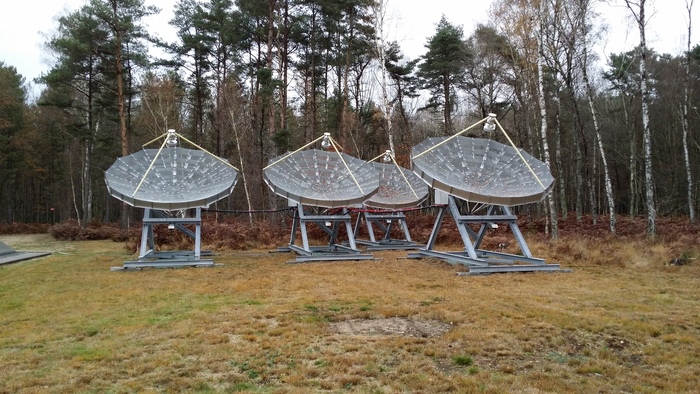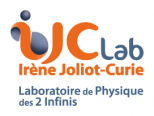BAORadio
BAORadio is an R&D activity to explore instrumental and observational techniques that will allow the use of Intensity Mapping of cosmological 21cm emissions. The 21cm line cresults of the hyperfine transition of the hydrogen atom. This narrow radio line indicates the presence of hydrogen in the Universe. The reconstruction of the distribution of this emission would be a way to reconstruct the spatial distribution of matter in the universe. The sharpness of the emission line allows to precisely know the cosmological redshift at which it was emitted. We would thus have access to the matter distribution in the Universe in 3 dimensions. This requires however to overcome phenomenological, instrumental and observational challenges. To extract cosmological parameters from 21cm observations, it is necessary for example to relate the distribution of hydrogen to that of matter, which requires a good knowledge of the evolutionary mechanisms of the Large Scale Structures. The level of the cosmological signal at 21cm is very low, its detection thus requires a large collecting area, while limiting the construction and operation costs to the maximum, and an excellent sensitivity. It is expected that arrays of several thousand antennas operating in interferometric mode will be used. The on-line digital processing of their signals is then one of the most complex challenges to meet. The 21cm signal is also buried under foreground effects which must be eliminated (which seems to be feasible by using the different distributions of the foreground and 21cm in space and frequency). In this field, which has been under development for about fifteen years,after its initiation by, among others, members of the group, in the perspective of large instruments like SKA and PUMA, the LAL team has developed competences that it pursues in two complementary ways:

- PAON4 and Idrogen : PAON4 is an interferometer with 4 parabolas of 5m diameter, installed at the Nancay station, in collaboration with this institute, the Paris-Meudon observatory and the CEA/DPHP. It is a test platform for observation techniques (in transit mode), data acquisition and analysis. We deploy an innovative collection and acquisition chain, including in particular a digitization board, IDROGEN, developed in the framework of the IN2P3 DacqGen program, which allows, thanks to the use of the White Rabbit synchronization system, to digitize signals (at frequencies between 1250 and 1500 MHz) as close as possible to the receivers while avoiding the transport of RF signals over long distances.
- Tianlai pathfinder instrument (array of dishes): Tianlai is an international collaboration led by NAOC (Beijing, China), with partners in the USA (Fermilab and Wisconsin University in Madison in particular). It has built an exploratory instrument with 3 semi-cylindrical antennas equipped with receivers on their axis (geometry also used by the CHIME instrument) and a more conventional interferometer with 16 dishes of 6m diameter. We are particularly involved in the analysis of the data from this second instrument.

The Tianlai pathfinder instruments : dish array (left) and cylindrers (right)
IJCLab team :
Teachers and staff physicists : R. Ansari, J. E. Campagne, O. Perdereau
Technical team : D. Charlet (resp.), C. Cheikali, H. Grasland, K. Malkinski, A. Saussac, E. Plaige, M. Taurigna









